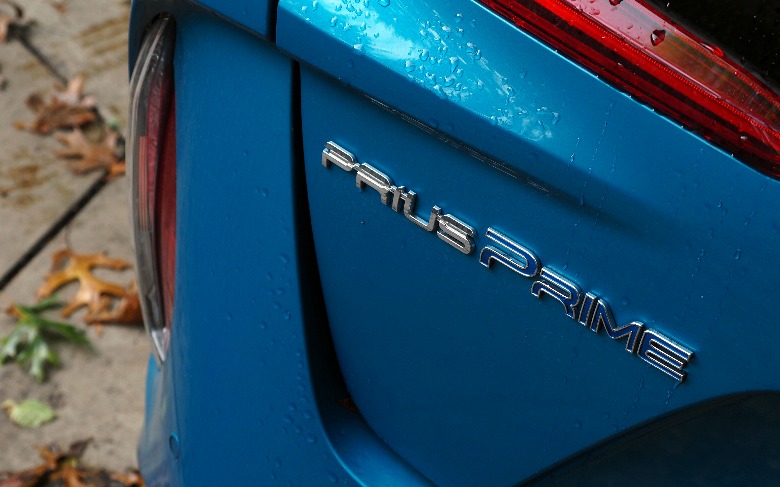The rest of the cabin is generally spacious and comfortable. There’s sufficient room for adults in the second row, though you sacrifice some cargo space for that bigger battery. There, you’re looking at 19.8 cu-ft with the rear bench up, or 36.6 cu-ft with it down.
I’m a fan of plug-in hybrids generally, though it’s not hard to conclude that the auto industry is shifting away from them. Chevrolet’s decision to axe the Volt, for example, arguably marked the big turning point for compact PHEVs. The irony is that, with its 53 miles of electric-only range, the ill-fated second generation Volt could actually be driven further in EV mode than most of the PHEVs that remain on sale today.
 Chris Davies/SlashGear
Chris Davies/SlashGearEven in a diminished line-up, though, the 2022 Prius Prime doesn’t feel quite as ambitious as its space-age design. A Hyundai Ioniq plug-in hybrid, for example, is rated for 29 miles in EV mode and starts at $1,400 less. Toyota’s own RAV4 Prime offers 42 miles of electric range and is far more rewarding to drive; unfortunately, it also starts at $39,800.
Nonetheless, given the choice between this $35k Prius Prime Limited tester, and a base RAV4 Prime, I’d have to dig a little deeper in my wallet and go for the crossover. Toyota’s hatchback PHEV feels like the epitome of the “transportation appliance,” only its frustrating infotainment leaves it less pleasant to live with than such straightforward motoring should be. With driving dynamics best described as dreary, it finds itself squeezed between cheaper rivals with more electric range, and Toyota’s own – and far better – electrified alternatives.
Stay connected with us on social media platform for instant update click here to join our Twitter, & Facebook
We are now on Telegram. Click here to join our channel (@TechiUpdate) and stay updated with the latest Technology headlines.
For all the latest gaming News Click Here
For the latest news and updates, follow us on Google News.
